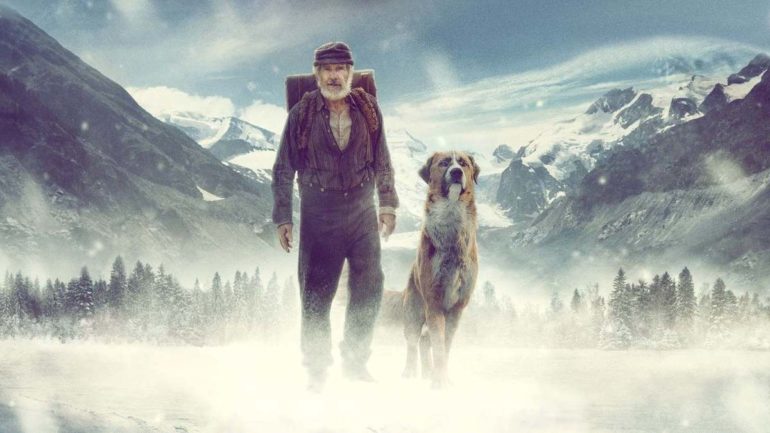The late 1890s saw a gold rush which brought thousands of American prospectors to Alaska. In their quest for personal fortune, they recruited sled dogs to guide them through the wilderness. Together, man and canine battled the elements of one of the most vicious climates on the planet.
Jack London’s novel Call of the Wild, published in 1903, captures the bitter reality behind this overlooked period in time. The novel has seen numerous film adaptations a century after its publication, and the latest instalment by Chris Sanders saw its release on February 21st, 2020.
Sanders’ Call of the Wild stars Harrison Ford as prospector John Thornton. The remainder of the cast includes actors such as Dan Stevens, Omar Sy, and Cara Gee, but the star of the film is Buck: a St. Bernard Scott Collie mix who is given a complete CGI rendering. The absence of an actual dog allows for the creators to have more freedom in telling the story just right. At the same time, it is also the main source of the film’s hiccups – and there are a few.
Sanders’ film introduces audiences to Buck, a spoiled house dog who is kidnapped and shipped to Alaska to become a sled dog. Once there, he is forced to endure the hardships of the merciless Klondike. Buck proves to be a quick learner and fights to become the leader of his sled pack. As he gains recognition among his masters, he also gains recognition from those who wish to exploit him for sinister purposes. Buck comes to terms with his new standing in the world, but he must also make the fateful choice as to where he truly belongs – among humans or among canines.
Call of the Wild isn’t perfect, and no one should expect it to be. Fans of Jack London’s novel will notice differences between the prose and the movie, but Sanders’ film crafts a compelling story which easily draws audiences in. Anyone can relate to Buck’s coming-of-age struggle, along with his growth from weakling to champion. Buck endures harassment and danger from his fellow canines and his ever-changing masters, and as he overcomes each obstacle, the audience falls more in love with him.
Fans of nature settings will also fall in love with the film’s scenery. Call of the Wild captures both the viciousness and harmony of the Yukon. There are avalanches and frozen rivers, but there are also lush valleys and fertile lands extending to the horizon. Said films can sometimes go overboard in pushing the scenery – especially with the overuse of drone shots these days – but Call of the Wild does not do that. For anyone interested in the Alaskan wilderness, the film offers a great snapshot of life in this part of the world. It is largely uninhabited by humanity, and that very well may be the reason behind its beauty.
Probably the most intriguing approach is with the complete CGI rendering of Buck, along with almost every other animal in this film. No doubt, this allows for more creativity with animal behavior. Buck jumps into frozen ponds, rescues other animals from waterfalls, and fights through Arctic blizzards – something which might be too demanding for a stunt dog. There’s an extraordinary amount of attention given to detail with these renderings, sometimes giving the impression that these are real animals doing real stunts and expressing real emotions. Buck and his companions are the rock of this film, and the film’s main strength comes from its attempt to get their appearance and mannerisms just right.
At the same time, the CGI tends to be the film’s biggest weakness in places. The film opens with Buck being told to wake up his family. On command, he hops from bed to bed – up and down – almost to the point of being cartoonish. Moments like these tend to blur the line between comedic relief and cartoonish shenanigans, and this interferes with the overall depth of the film.
The creators also use CGI to give Buck visual emotions. This is an obvious attempt to allow audiences to relate to Buck easily, but at times, it makes the dog too human. It’s one thing to watch animals grow and evolve the way humans do, but it’s another thing to make them humanistic, and this was what Sanders should have avoided. It might work with the Lion King, but it doesn’t have the same impact in a film about a real dog.
The CGI definitely takes some getting used to with Sanders’ film. However, once the viewer settles in, Buck’s journey becomes both heartwarming and exciting. Dog lovers will not want to pass this one up while admirers of Jack London’s tale will enjoy the film’s take on the novel.
Some of the coverage you find on Cultured Vultures contains affiliate links, which provide us with small commissions based on purchases made from visiting our site.


